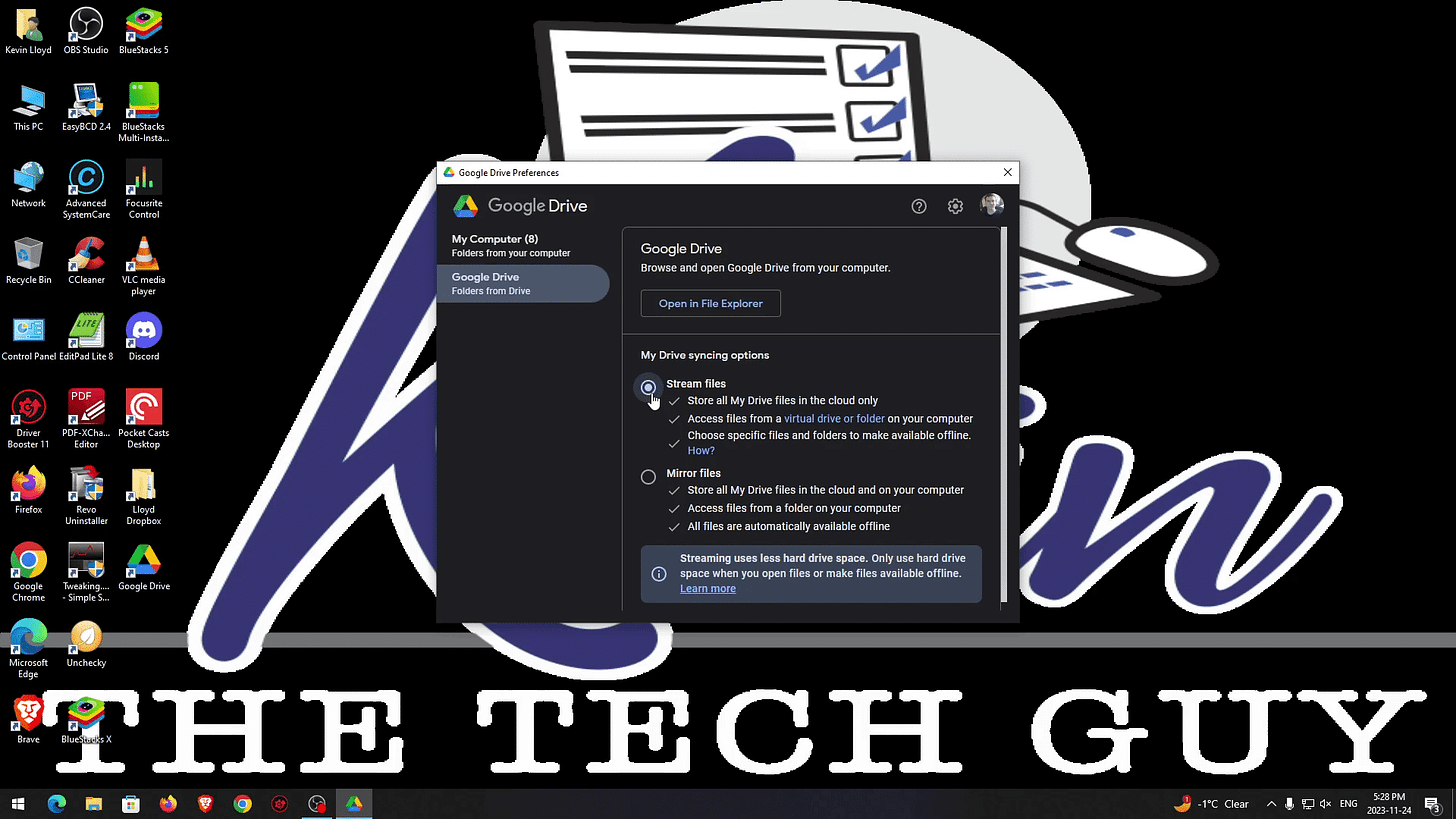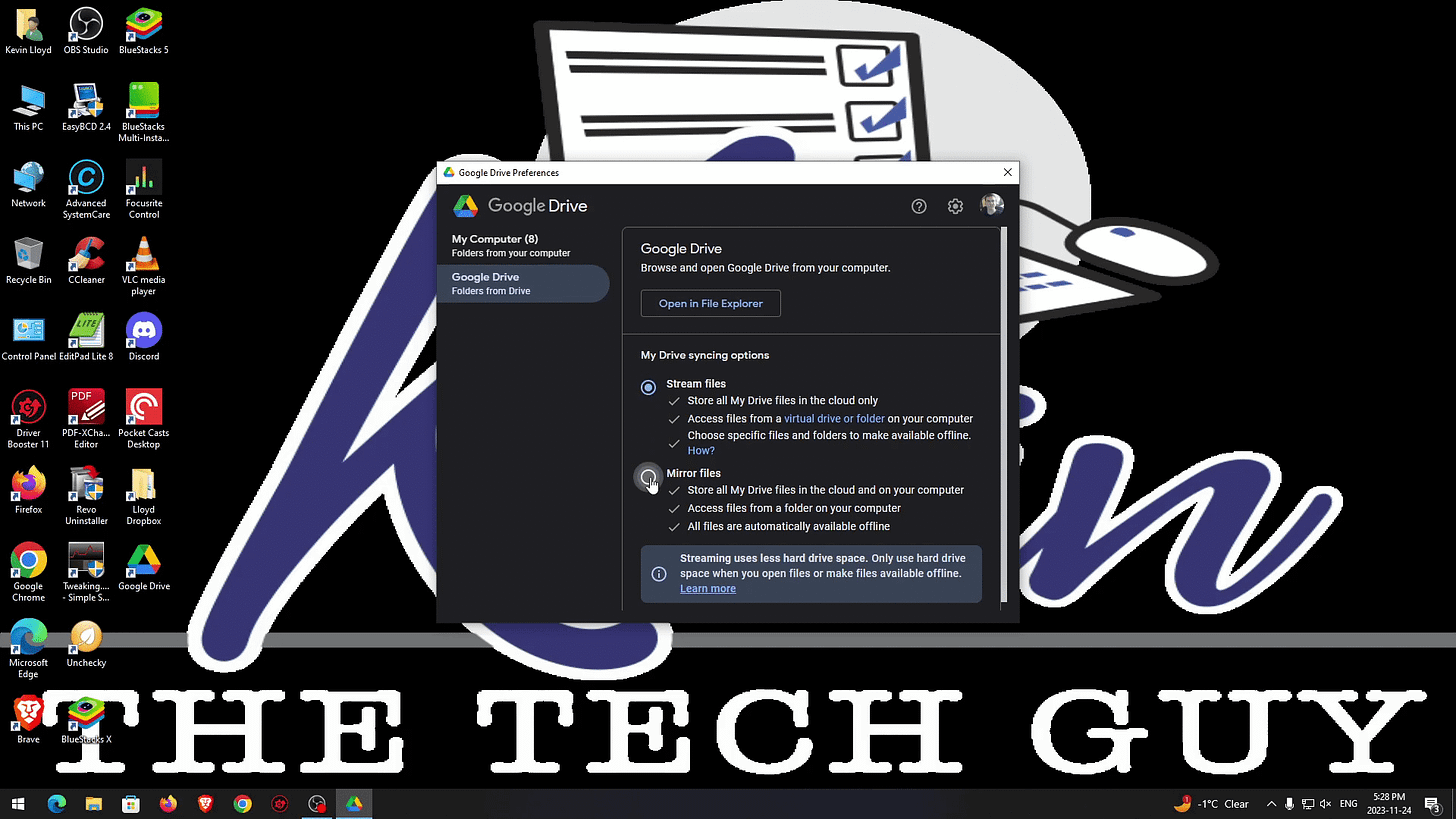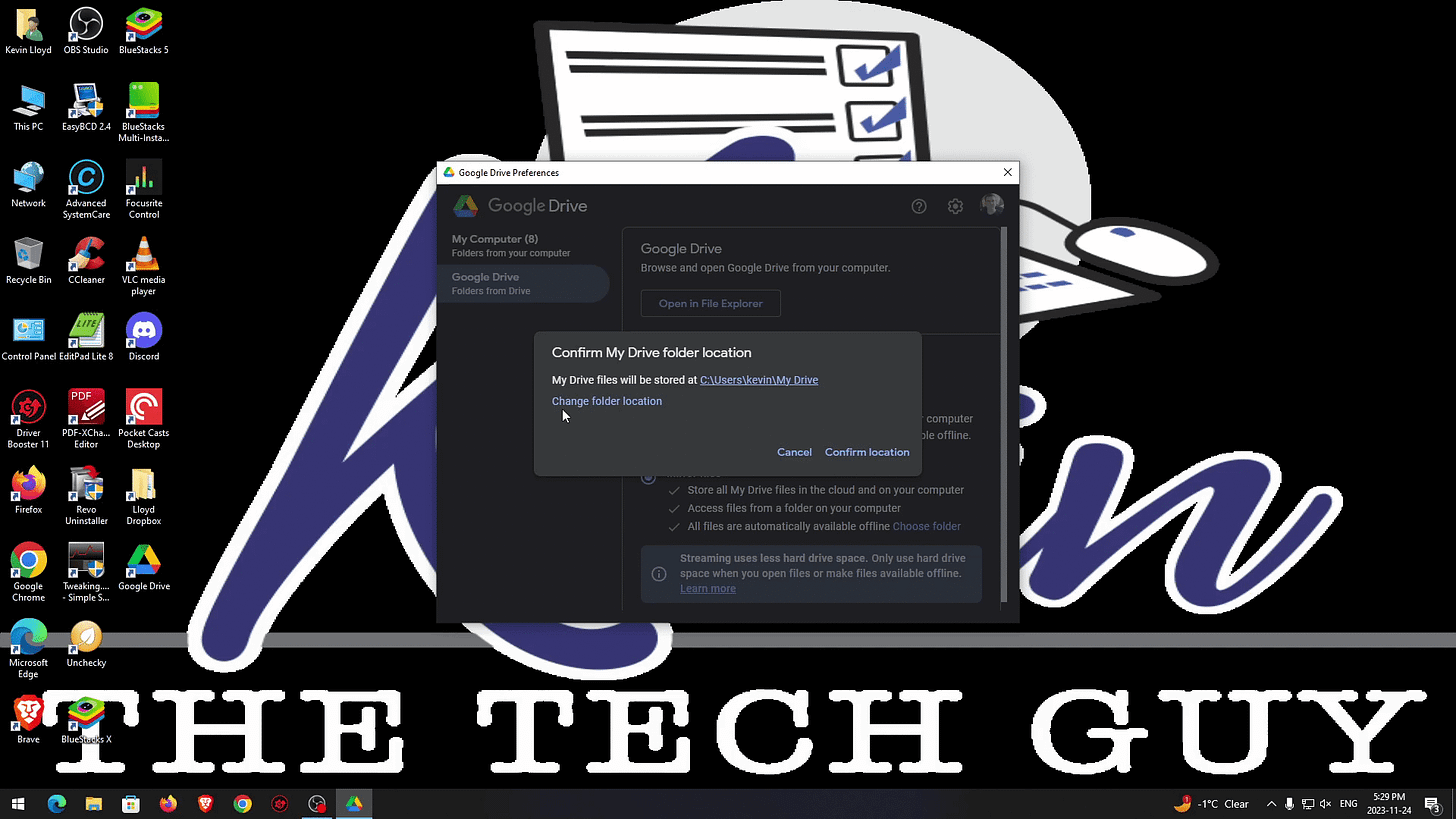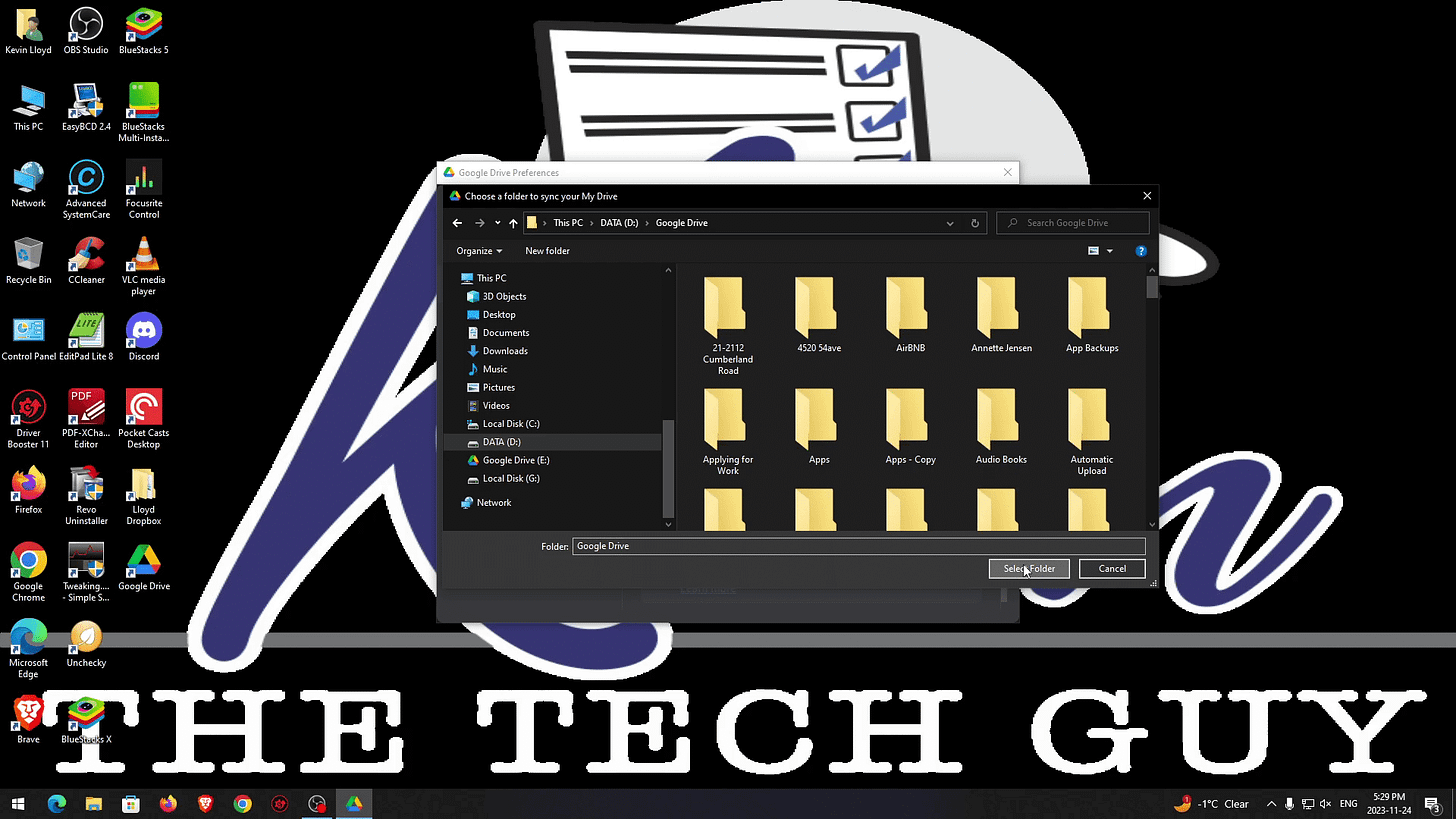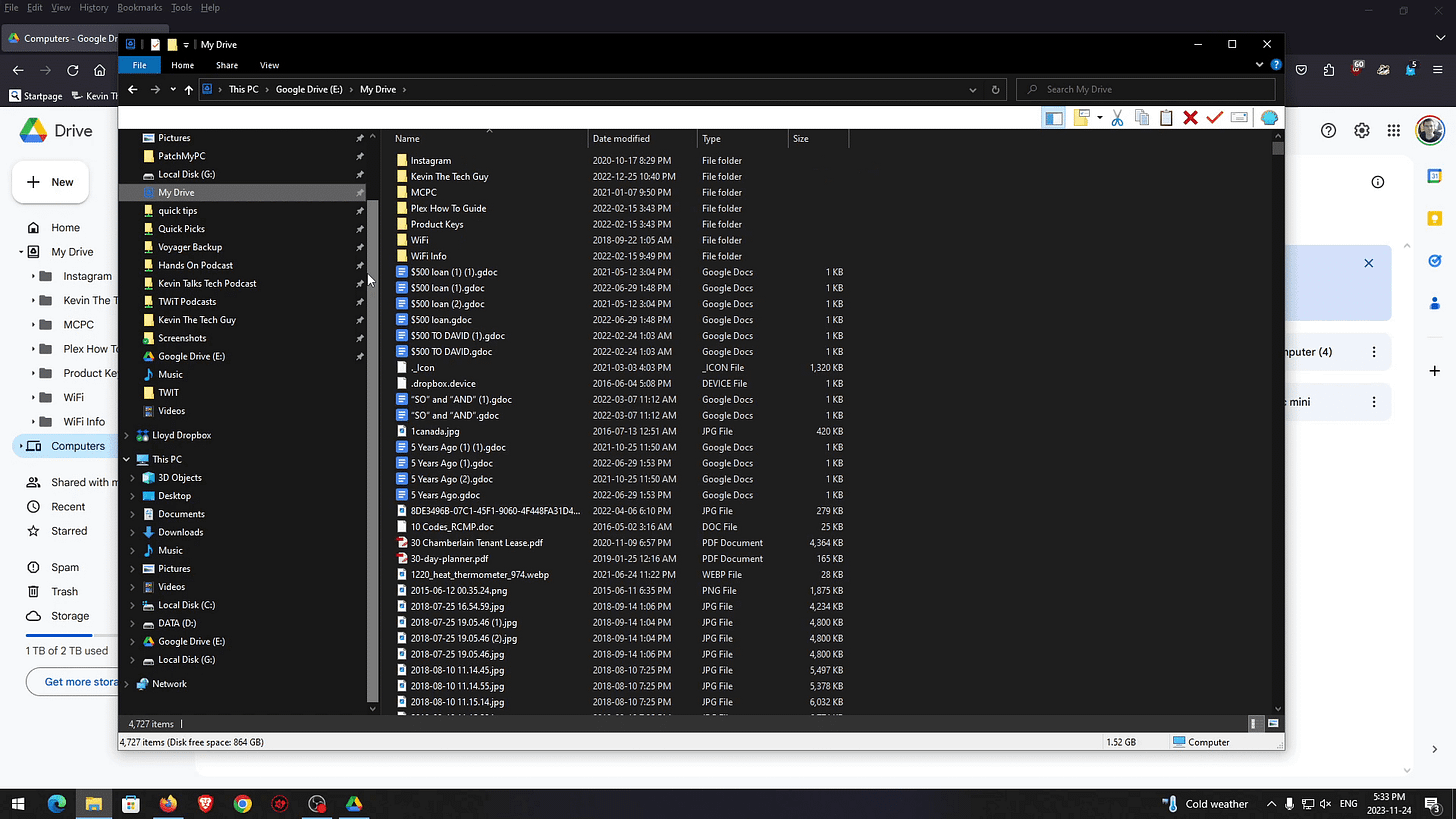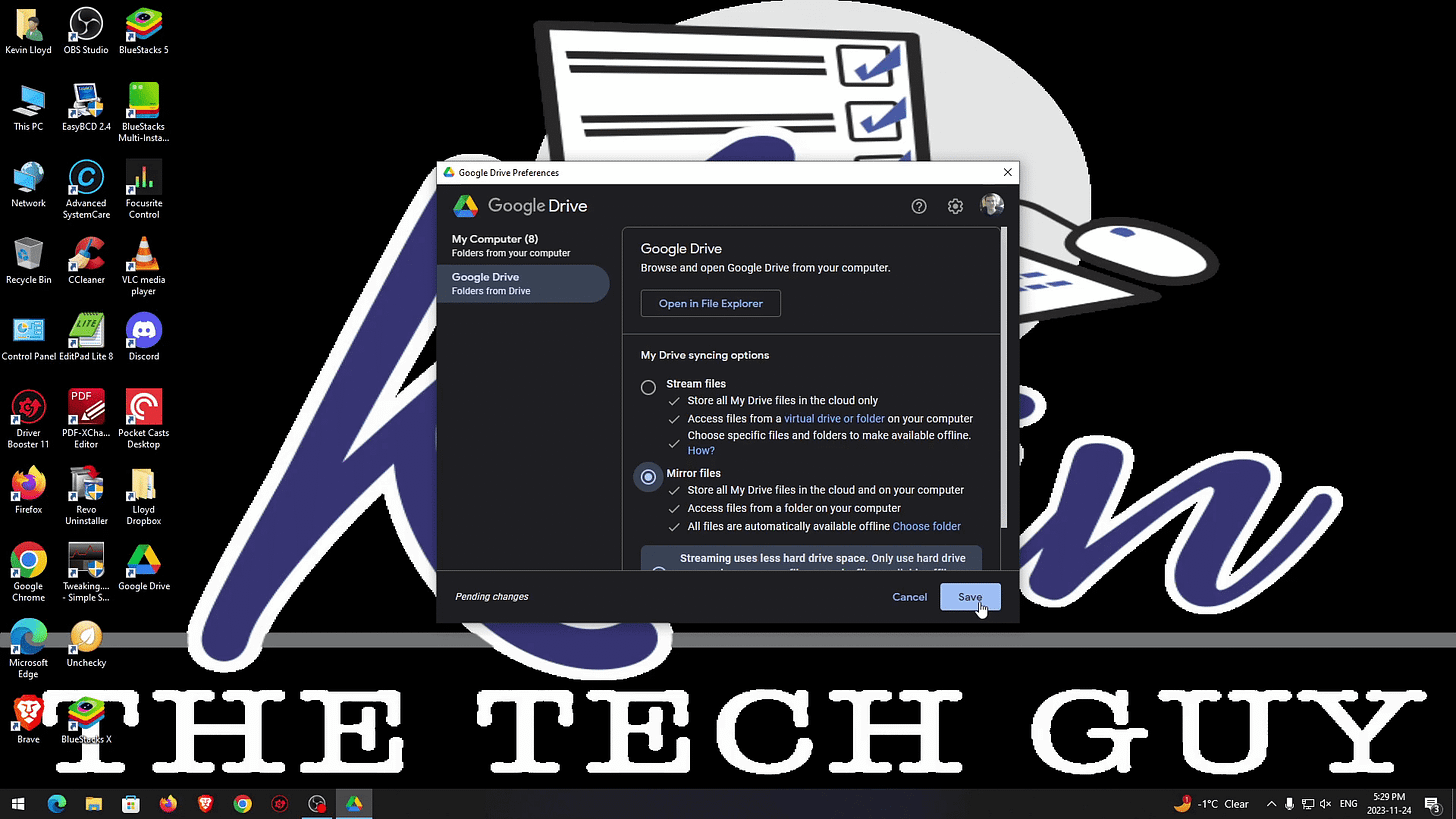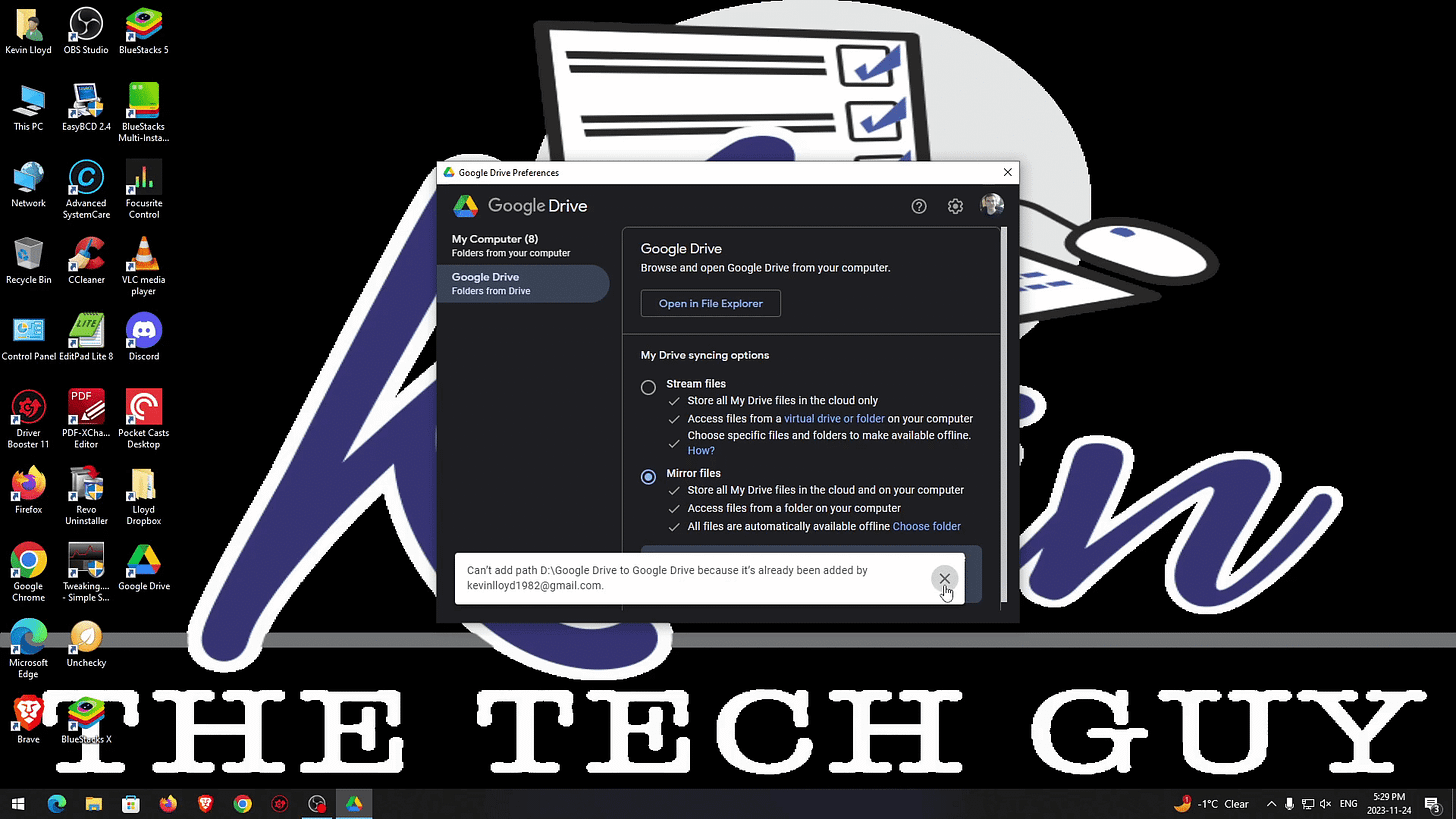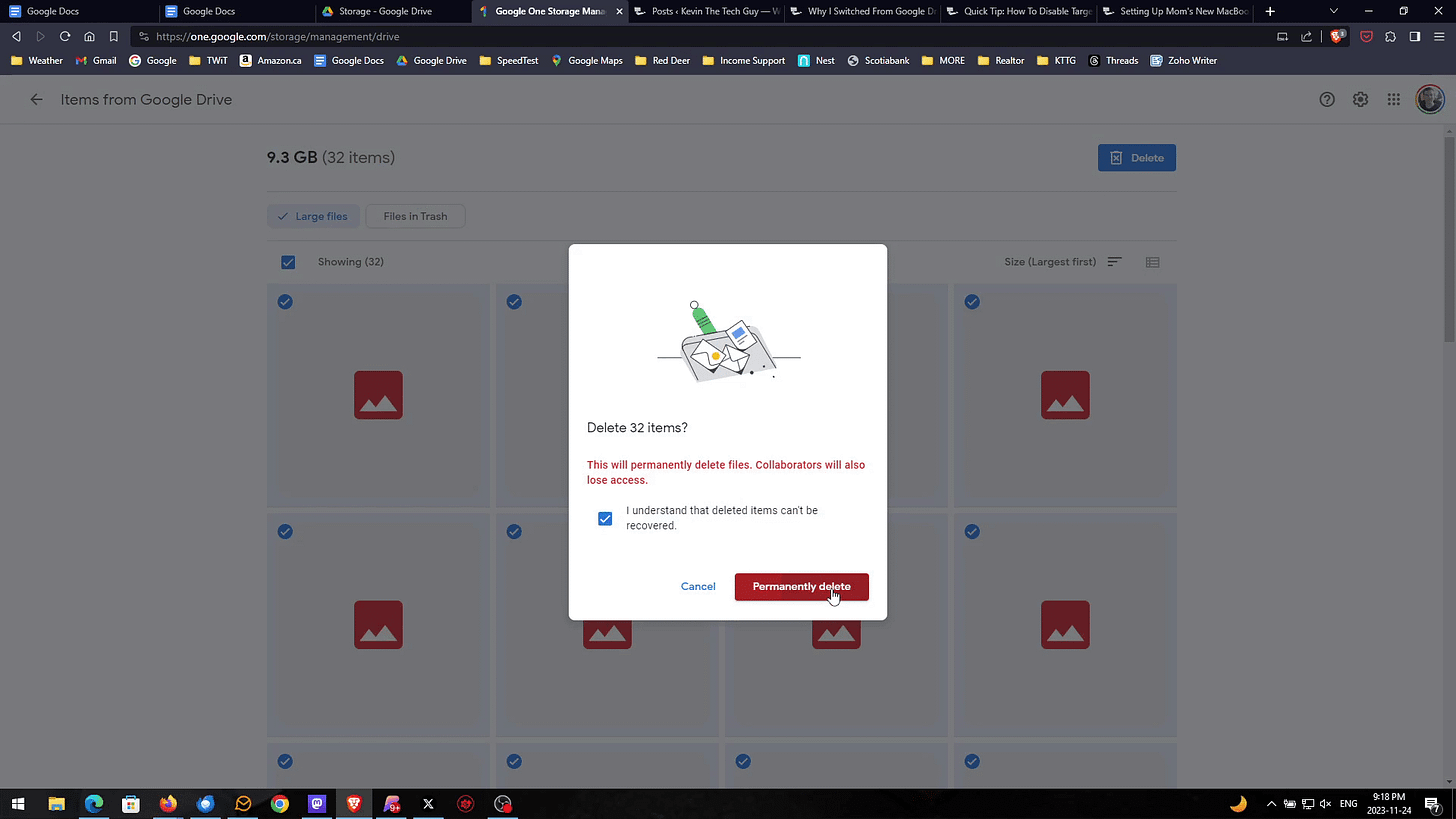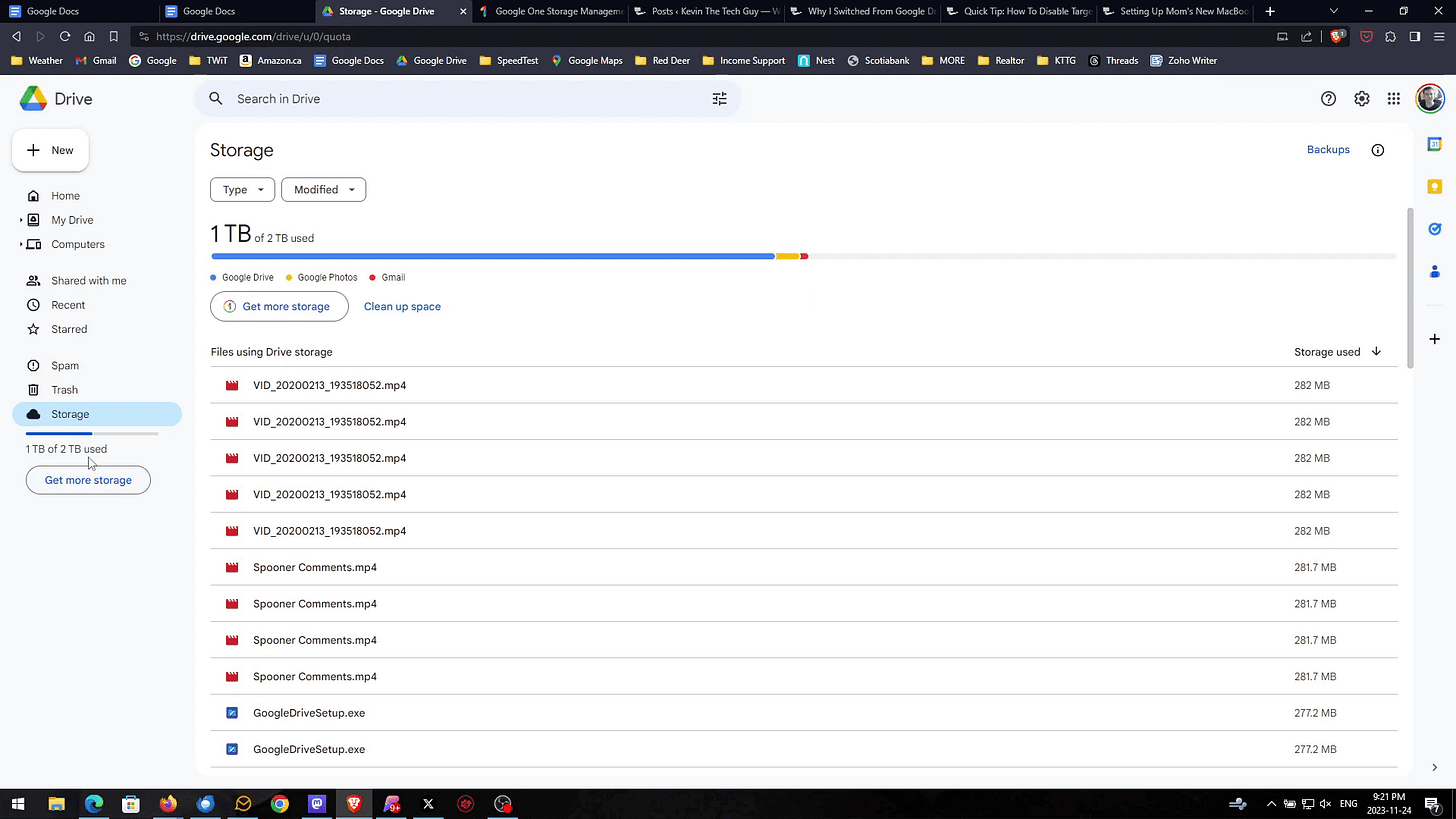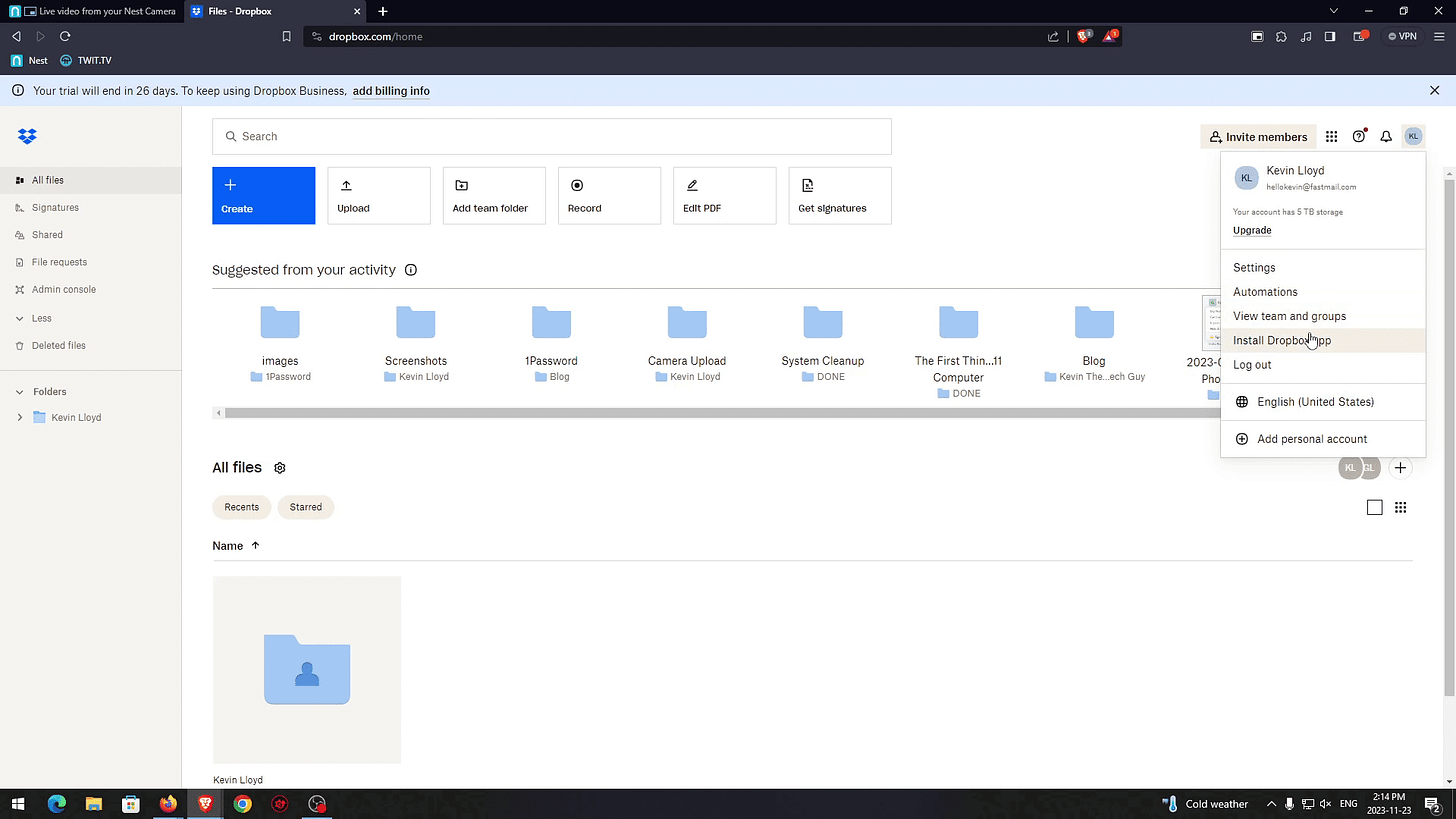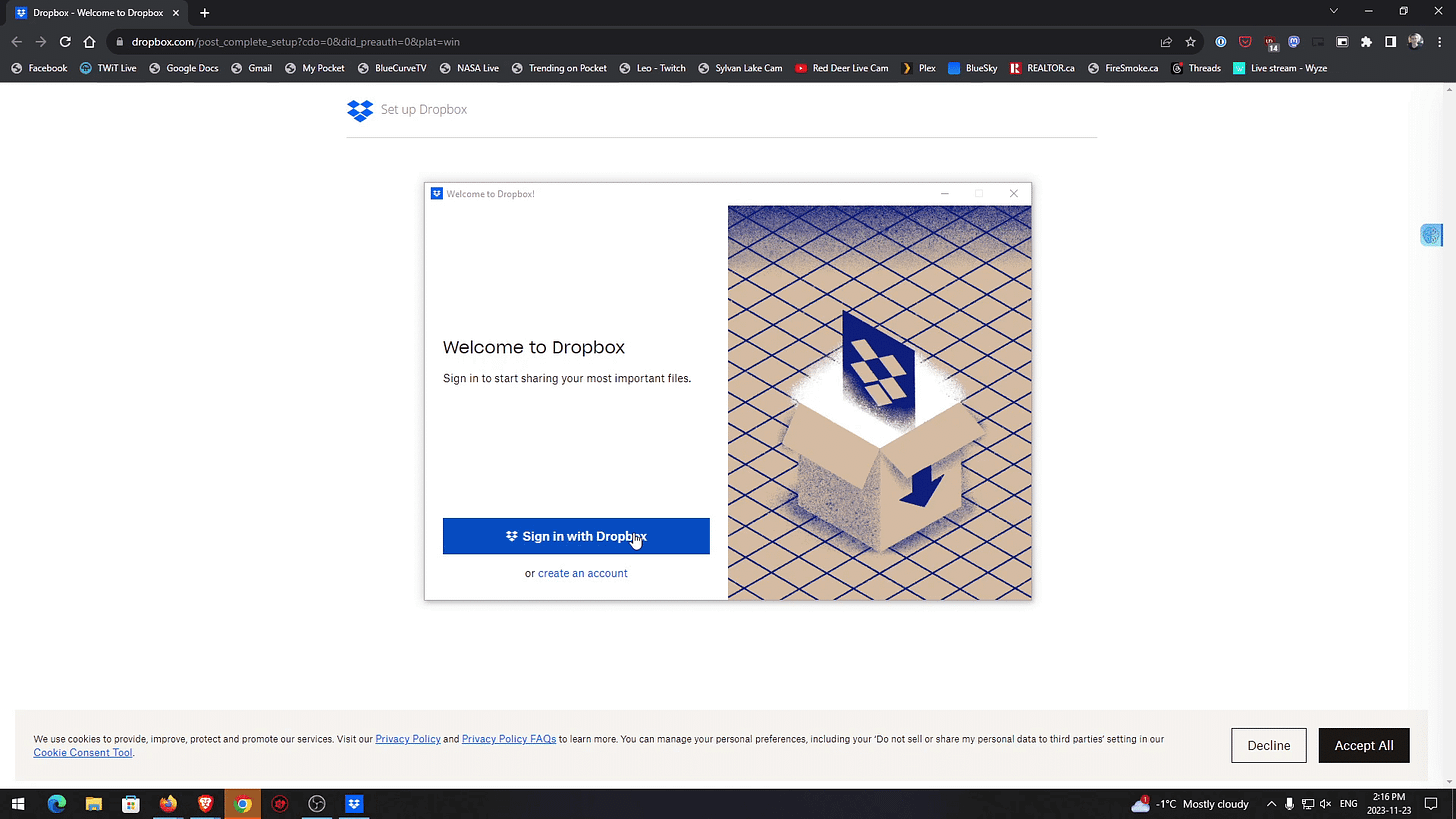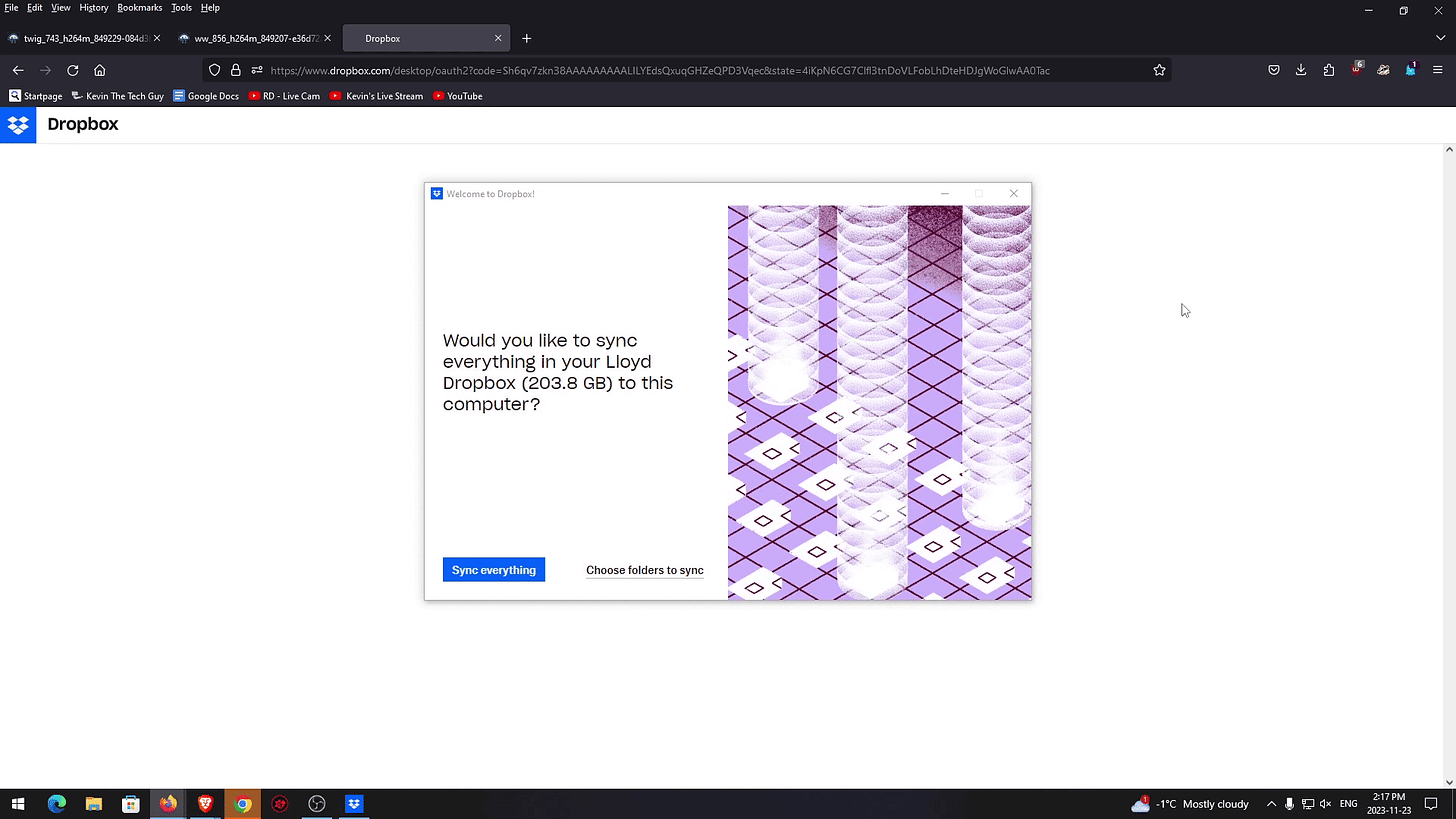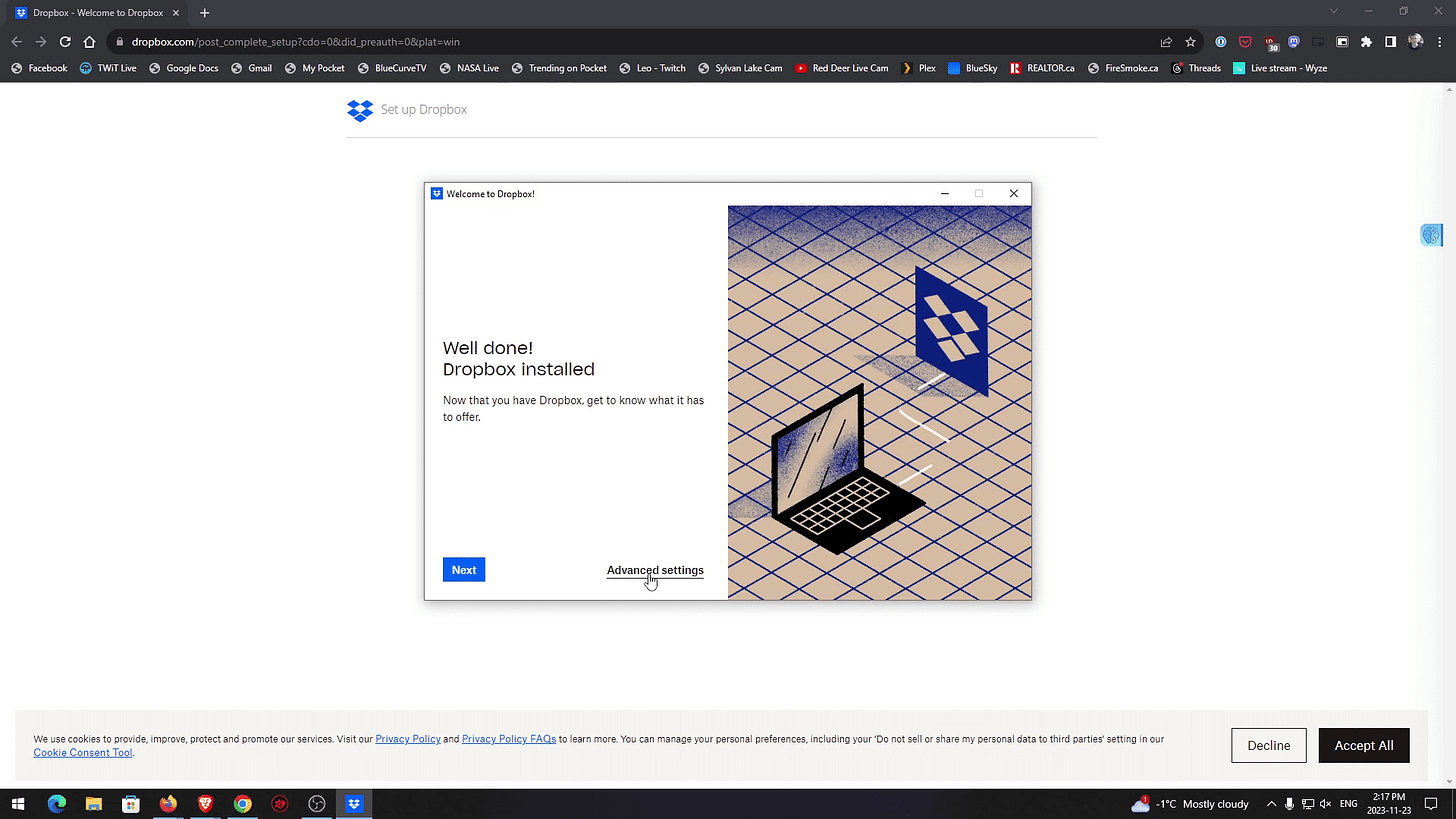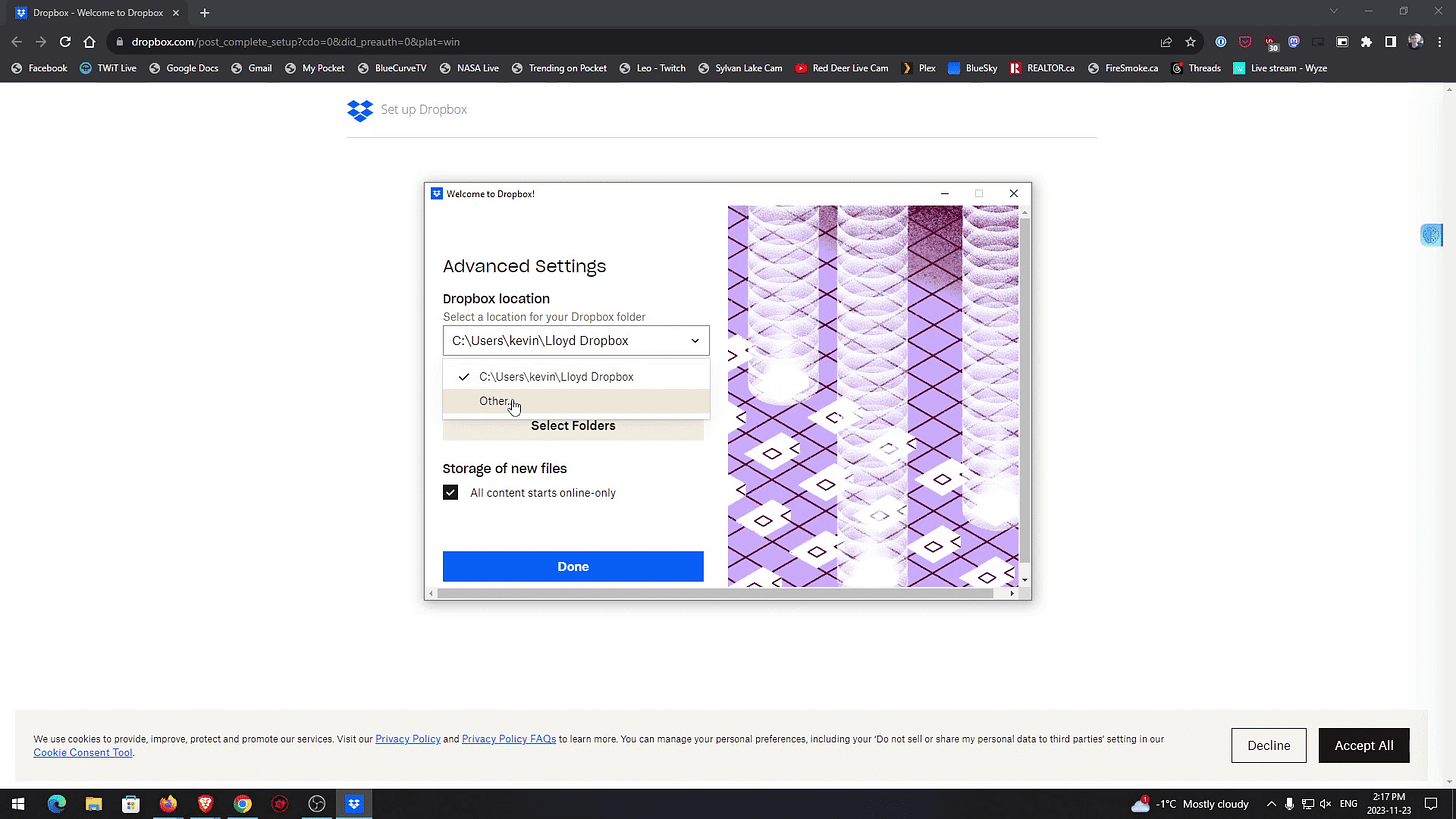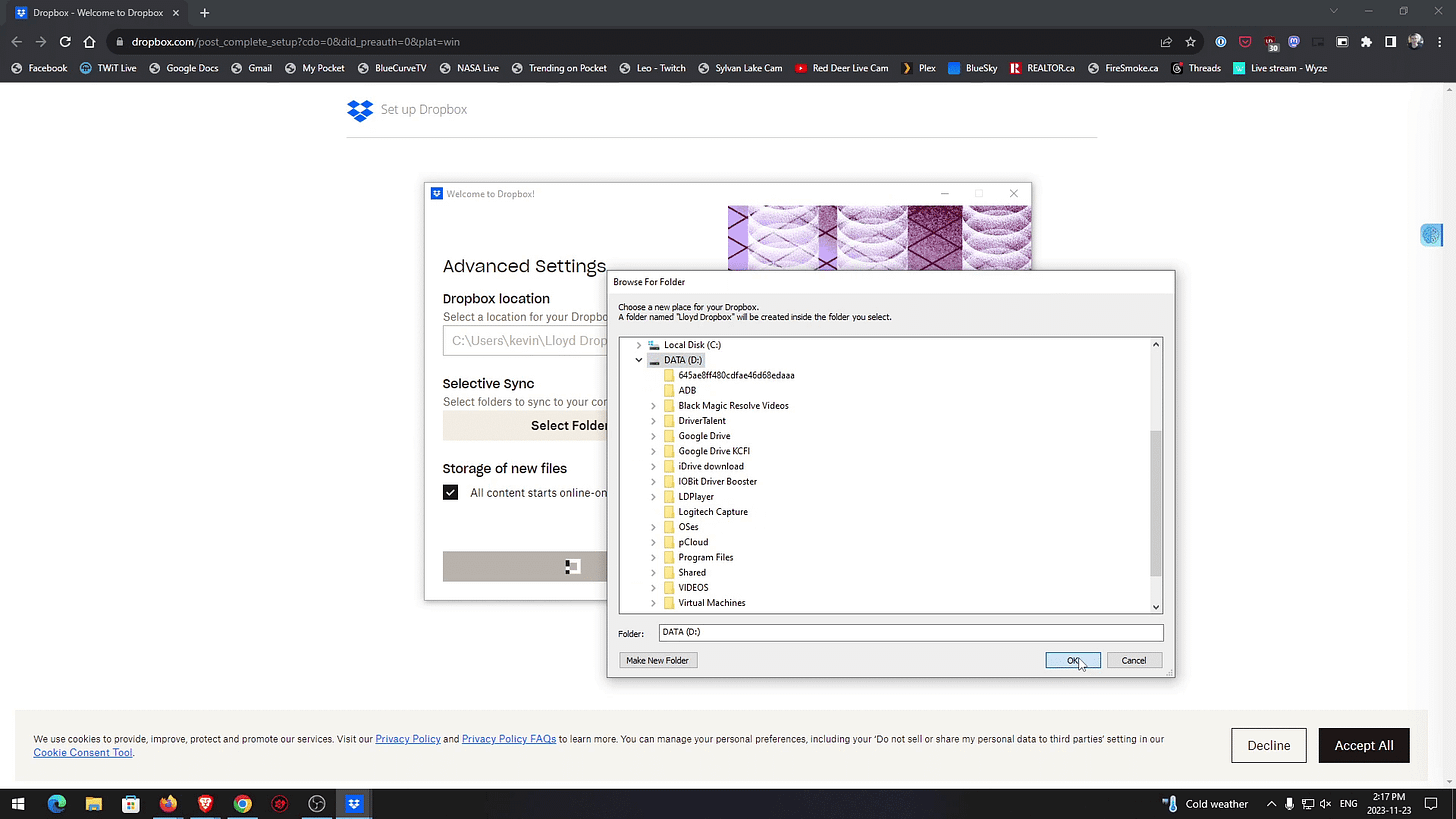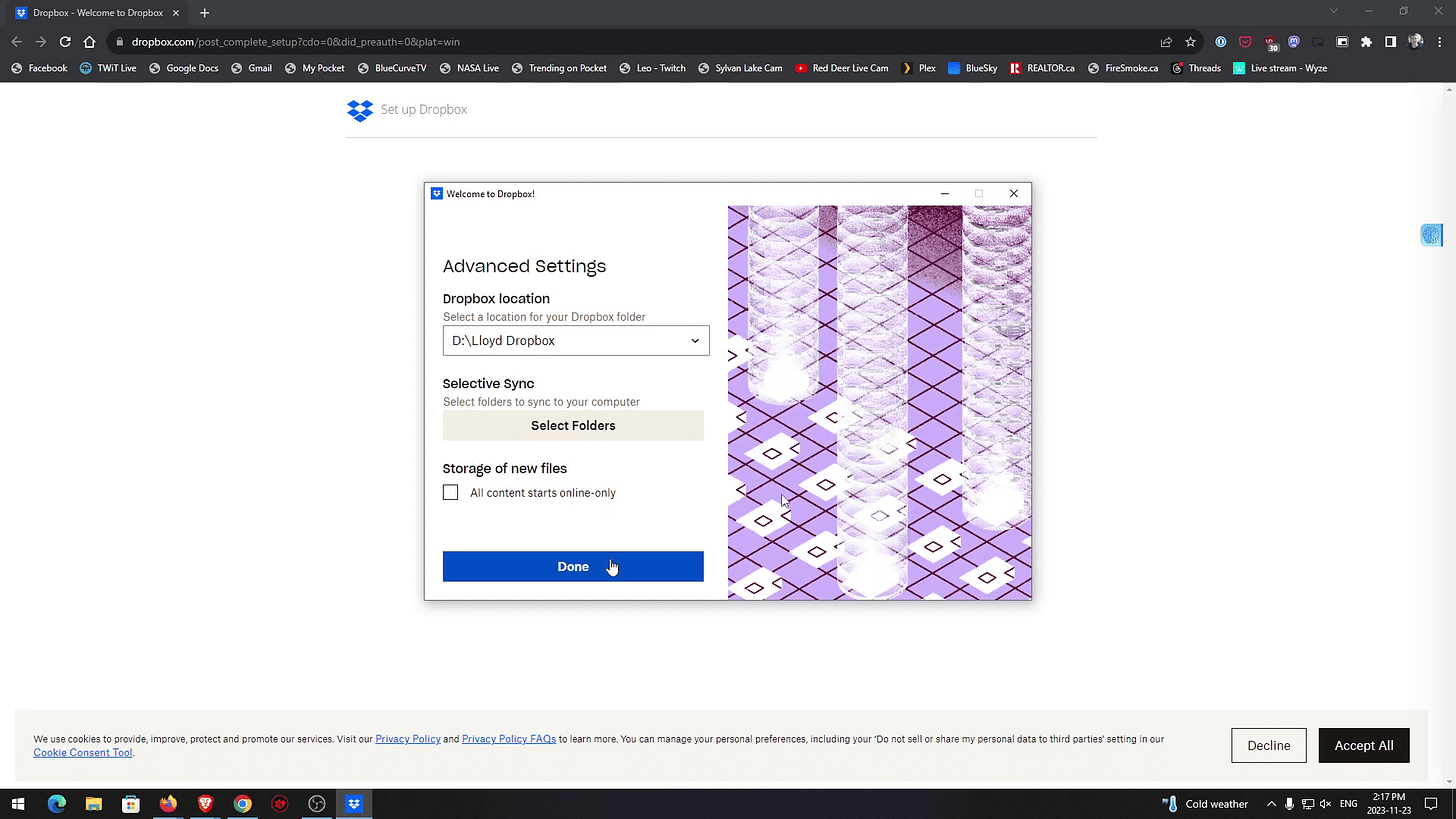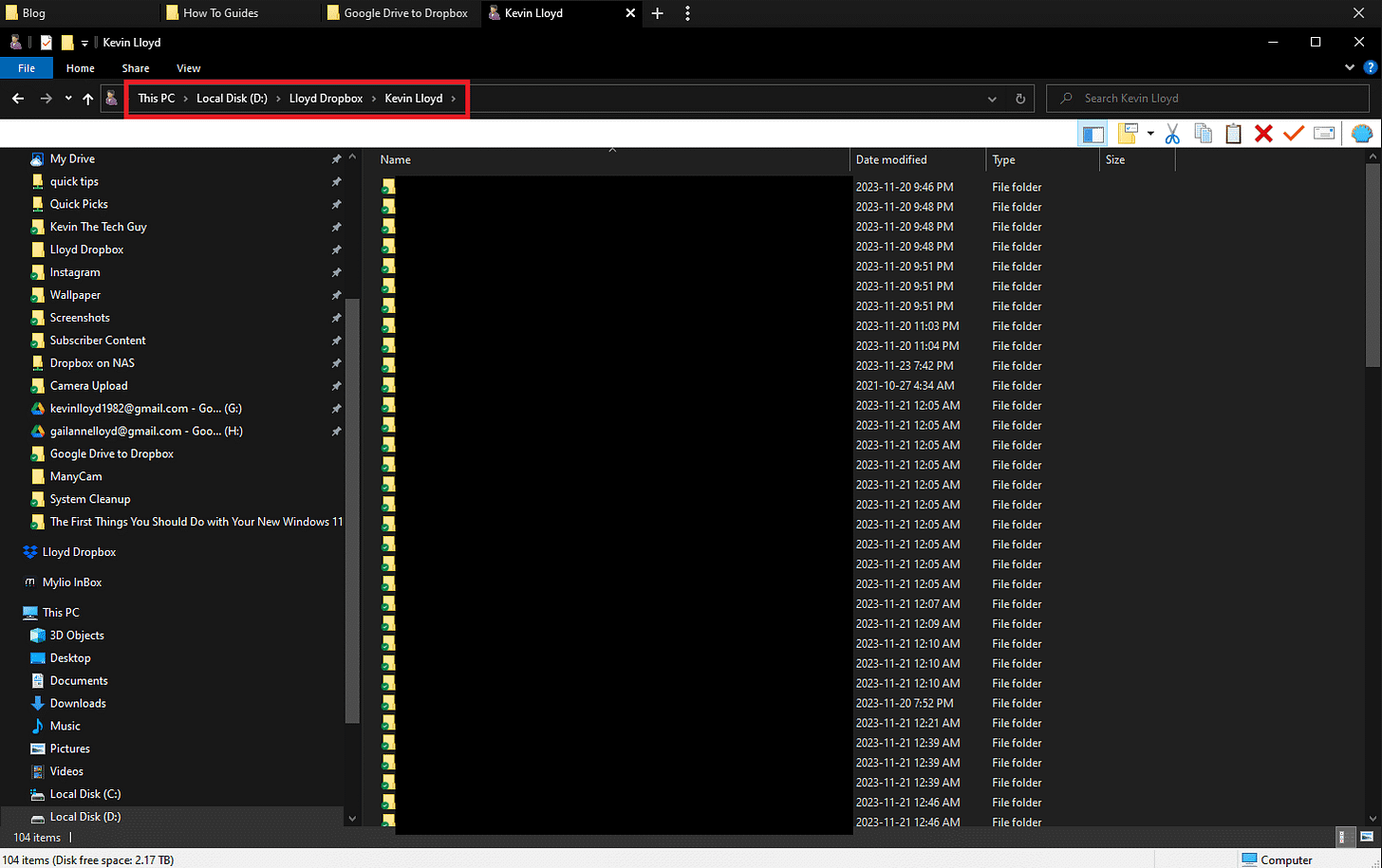Why I Switched From Google Drive to Dropbox
I got fed up with Google Drive’s syncing and offline issues, so I switched to Dropbox. Here’s why it made sense for me, and why I can't recommend the Google Drive desktop app.
A few months back, I hit my breaking point with Google Drive. Between file syncing issues and constant problems with offline access, it was becoming more of a hassle than a help. After some trial and error, I made the switch to Dropbox—and I couldn’t be happier.
I’ll break down the frustrations I had with Google Drive, like its unpredictable file settings and storage management. I’ll also dive into why Dropbox has been a much better fit, especially when it comes to offline access and giving me more control over my files.
If you’ve been frustrated with cloud storage options and need a clearer explanation of how these tools work—and what to watch out for—I’ve got you covered.
Issues With Google Drive
Click Image To View Larger Version
In the Google Drive settings, by default, they "stream" your files stored on your cloud account on Google Drive.
This means it will ONLY download specific files to your computer when you open them. This is a great benefit if you want to avoid a copy of ALL of the folders and files in your Google Drive account on your computer if storage space is an issue.
The issue with this is it absolutely depends on your internet connection working at those times, and for Google Drive itself to be working and not having an outage. Otherwise, you WILL NOT have access to your files on your Google Drive account.
If storage space IS an issue, you CAN do what's called "Selective Sync", and you can choose ONLY to have a copy of the folders that you absolutely NEED, so you're not relying on the cloud to access them, and changes will automatically be synced.
The option I strongly prefer is called "Mirroring", which downloads a copy of ALL of the folders and files in your Google Drive to a location (folder) on your computer as a kind of automatic backup. This provides peace of mind.
But if you have a LOT of files in your Google Drive, and a data cap on your internet, it CAN add up and significantly or completely use up your allocated data limit. So please keep that in mind.
At least that's what you SHOULD be able to do. If you don't pay careful attention during when you FIRST setup Google Drive, it doesn't seem to wan to let you MIRROR your files, and I couldn't figure out how to enable that after the fact.
In fact, it gave me the impression I had enabled mirroring my files, only for me to discover that it was still STREAMING my files.
If Google Drive creates a "virtual drive", usually with the "G:" drive letter assignment, it means it is ONLY streaming your files.
Here I am showing an example of that.
Here's what my Google Drive looks like currently. To the non-tech savvy person, it LOOKS like just another folder on your computer where you Google Drive files are stored, but that's NOT the case at all. What you're seeing are the files available in your Google Drive cloud account online.
Even when you THINK you're mirroring your Google Drive files, when I checked the settings again, it's STILL streaming, NOT mirroring, no matter how many times you tell it to.
Even when you THINK you're mirroring your Google Drive files, when I checked the settings again, it's STILL streaming, NOT mirroring, no matter how many times you tell it to.
It does give you the message saying it can't use a folder on your computer to store your Google Drive files because it's already in use by Google Drive, but it's CLEARLY not using it, so that doesn't make sense!
After creating a local backup of ALL my Google Drive files (which are downloaded from your cloud account, During troubleshooting, I attempted to delete the files in my Google Drive and tried to find a setting to stop using the folder on my computer. It says it is "in use" by Google Drive, to turn that off. Can't find it anywhere.
Even when I deleted a bunch of files, Google Drive STILL says most of that space in my Google Drive is still in use.
Okay, I'm fed up, this is BS, and after some research and trial and error, I'm switching to Dropbox.
Setting Up and Using Dropbox
Alright, let's talk about Dropbox. So far, it's working great for me, but I misunderstood the pricing for the tiers, and I'm trying to downgrade to a personal plan of 2TB, possibly 3TB.
In any case, here's a brief guide to downloading, installing, and setting up Dropbox.
After you create your Dropbox account, you can download the desktop (PC or Mac) app in your account by clicking your profile (your initials) and clicking "Install Dropbox".
Double-click the install file, which usually ends up in your "Downloads" folder on your PC or Mac. You will be immediately asked to sign into your Dropbox account. Your default browser will open to allow yo to do that.
Double-click the install file, which usually ends up in your "Downloads" folder on your PC or Mac. You will be immediately asked to sign into your Dropbox account. Your default browser will open to allow yo to do that.
The next screen allows you to "sync everything" or "choose folders to sync". The option you choose will depend on where you want to store those files on your computer and how much storage space is available.
If you're "streaming" them, local space is less of an issue until you open a lot of files in your Dropbox, which downloads them.
Then, you can click "Next" to set up default options where Dropbox will "stream" files and NOT create a local copy of everything.
Otherwise, choose "Advanced settings" to choose the hard drive or solid-state drive where you want Dropbox files to appear (from the cloud) or download.
Here is the "Advanced Settings" page. Click the drop-down menu to select another location, likely a larger hard drive if Windows is installed on the smaller main SSD.
Here is the "browse for folder" window to locate the other hard drive or SSD where Dropbox can set up a folder.
Navigate to the drive, and click "OK".
Next up is probably the most important step in this process. Under "storage of new files," the default option is "All content start online-only."
This means your files will be "streamed" from your cloud account but will APPEAR locally when you navigate to that folder.
I absolutely recommend having a locally downloaded copy of your Dropbox files if you have the storage space to do it. They will simply APPEAR in that folder either way, but you'll KNOW you have a local copy and effective backup.
Finally, if you have chosen to not have "all content start online-only" during setup, your files and folders from Dropbox will start synchronizing from the cloud.
Final Thoughts
I absolutely hesitated to go back to Dropbox, given my experience with them years ago, but after trying the so-called reputable alternatives, I landed back on Dropbox, and it's working well for me this time, and so far I do recommend it.
I find the pricing tiers a little confusing, so watch out for that. it seems to be a situation where as long as the service works, we're happy, but customer service is disappointing when you need help.
In the end, switching from Google Drive to Dropbox was the right move for me. The constant syncing issues and lack of reliable offline access on Google Drive just couldn’t keep up with my workflow.
Dropbox has provided a more seamless experience, especially with local storage, and has given me greater control over my files.
If you’re dealing with similar frustrations and are ready for a change, Dropbox might be the solution you need. Cloud storage isn’t one-size-fits-all, so take the time to understand your options and choose what works best for your needs.
Thank you so much for reading this blog post as a paid subscriber! Your support makes my work possible.



